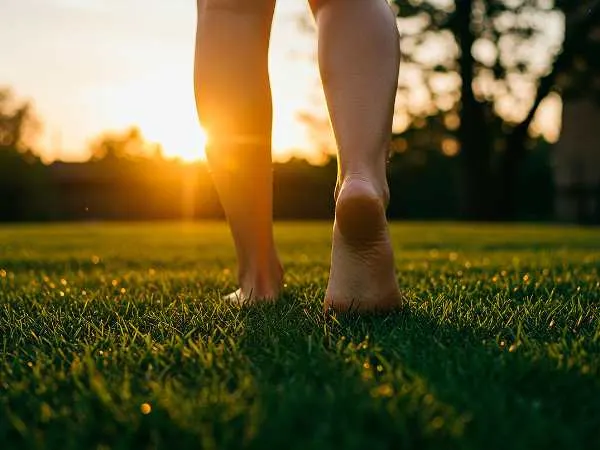These days, wellness trends pop up faster than dandelions, and the latest one tiptoeing into the spotlight is barefoot walking. Before you kick off your shoes, though, it’s smart to weigh whether this back-to-basics habit fits your stage of life.
Many older adults, including those living in assisted living communities, wonder if ditching footwear could help them feel steadier or simply invite trouble. Let’s explore the idea step by step.
Feeling the Ground: Why It Appeals
For plenty of seniors, the charm of going barefoot is plain and nostalgic. The cool grass, warm sand, or even a sun-baked patio tile can wake up sleepy nerves that shoes have smothered for years. Feeling those textures again sparks memories of childhood summers and offers a tiny burst of freedom in a life often ruled by routines.
Beyond sentiment, tossing the slippers may refresh circulation in the feet, which sometimes slows with age, and may gently nudge posture into a more upright stance today.
Possible Benefits for Foot Strength
Walking without shoes lets the muscles in your feet and ankles do jobs that cushioned soles normally grab for themselves. As toes spread and grip the ground, they practice balance in real time, which could translate to fewer wobbles on uneven sidewalks.
Some studies hint that regular barefoot strolls may thicken the pads under the heel and ball, making every step feel less jarring. Stronger arches can also share the load with tired knees and hips, easing aches that show up after long days ahead.
Risks Seniors Should Keep in Mind
Going shoeless is not all sunshine. Thin, aging skin tears more easily when it meets stones, splinters, or a sharp bit of gravel hiding in the rug. If you have diabetes or poor feeling in your feet, cuts can go unnoticed and turn into infections before you see them.
Bare floors also make slips likelier, especially on polished tiles or wooden stairs. And while a bit of arch work is good, overdoing it may leave the soles aching for days, discouraging further movement for anyone.
Simple Safety Tips to Start
Curious seniors don’t have to sprint across the gravel on day one. Begin indoors by standing barefoot on a carpet or yoga mat for a minute or two each morning, letting your toes stretch without pressure. Next, try laps on soft grass, scanning for debris first.
Keep shoes or sandals within arm’s reach so you can switch if discomfort grows. Moisturize cracked heels, trim nails straight across, and peek at the skin after every outing. Any redness or cut that lingers deserves a chat with your doctor.
Conclusion
Like many wellness ideas, barefoot walking for seniors is neither a miracle cure nor a hidden menace—it’s simply a tool. Used with care, it can wake up tired feet and stir happy memories; rushed or forced, it can set you back with scrapes and soreness.
The answer, then, isn’t a blanket yes or no, but a thoughtful first step taken on friendly ground. Listen to your body, keep your shoes handy, and let comfort—not trends—guide every stride. If doubts remain, ask a foot doctor.








